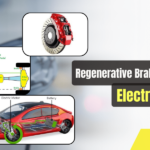
Charging into the Future: The Rise of Super Batteries in the EV Revolution
Electric vehicles (EVs) are becoming more popular and affordable, thanks to the advances in battery technology. However, the current lithium-ion (Li-ion) batteries that power most EVs still have some limitations, such as long charging time, limited driving range, and degradation over time. To overcome these challenges, researchers and carmakers are developing a new generation of batteries, called super batteries, that promise to transform the performance of EVs.
Super batteries are a type of solid-state Li-ion batteries, which means they use solid materials instead of liquid electrolytes to store and transfer electric charge. This makes them safer, more stable, and more energy-dense than conventional Li-ion batteries. Super batteries can also charge faster and last longer than conventional Li-ion batteries, which means they can reduce the cost and inconvenience of owning an EV.

Advantages of Super batteries:
✅ One of the main advantages of super batteries is that they can increase the driving range of EVs significantly.
For example, Toyota, the world’s biggest carmaker, claims that its new super battery will provide an EV with a range of around 1,200 km (746 miles), which is about twice that of many existing models.
Similarly, QuantumScape, a Silicon Valley startup backed by Volkswagen, says that its super battery can deliver a range of over 800 km (500 miles) on a single charge.
✅ Another benefit of super batteries is that they can reduce the charging time of EVs dramatically.
For instance, Toyota says that its super battery can be recharged in around 10 minutes, while QuantumScape says that its super battery can reach 80% capacity in just 15 minutes. This means that super batteries can make EVs more convenient and competitive with conventional vehicles that run on fossil fuels.
✅ A third advantage of super batteries is that they can extend the lifespan of EVs considerably.
Conventional Li-ion batteries tend to degrade over time and lose their capacity and performance. This is because the liquid electrolytes can leak, evaporate, or react with the electrodes, causing corrosion and damage. Super batteries, on the other hand, use solid materials that are more resistant to degradation and aging.
For example, QuantumScape claims that its super battery can retain over 80% of its original capacity after 800 cycles, which is equivalent to about 10 years of normal use.
Challenegs with Super Batteries:
🚀 Super batteries are not without challenges, however. One of the main obstacles is the cost and availability of raw materials, such as lithium, nickel, cobalt, and manganese. These metals are essential for making high-performance cathodes for super batteries, but they are also scarce, expensive, and environmentally harmful to mine and process. Therefore, researchers and carmakers are looking for ways to reduce the dependence on these metals or find alternative materials that are more abundant and sustainable.
🚀 Another challenge is the scalability and mass production of super batteries. Making solid-state Li-ion batteries is a complex and delicate process that requires high precision and quality control. It is also difficult to make large and thin electrodes that can fit into the limited space of an EV without compromising the performance or safety of the battery. Therefore, researchers and carmakers are working on improving the manufacturing techniques and equipment for making super batteries more efficiently and reliably.
🚀 Super batteries are still in the early stages of development and testing, but they have the potential to revolutionize the EV industry and accelerate the transition to clean and green mobility. By offering faster charging, longer range, and longer lifespan than conventional Li-ion batteries, super batteries can make EVs more attractive and affordable for consumers and businesses alike. Super batteries can also reduce the environmental impact and carbon footprint of EVs by using less raw materials and generating less waste.




